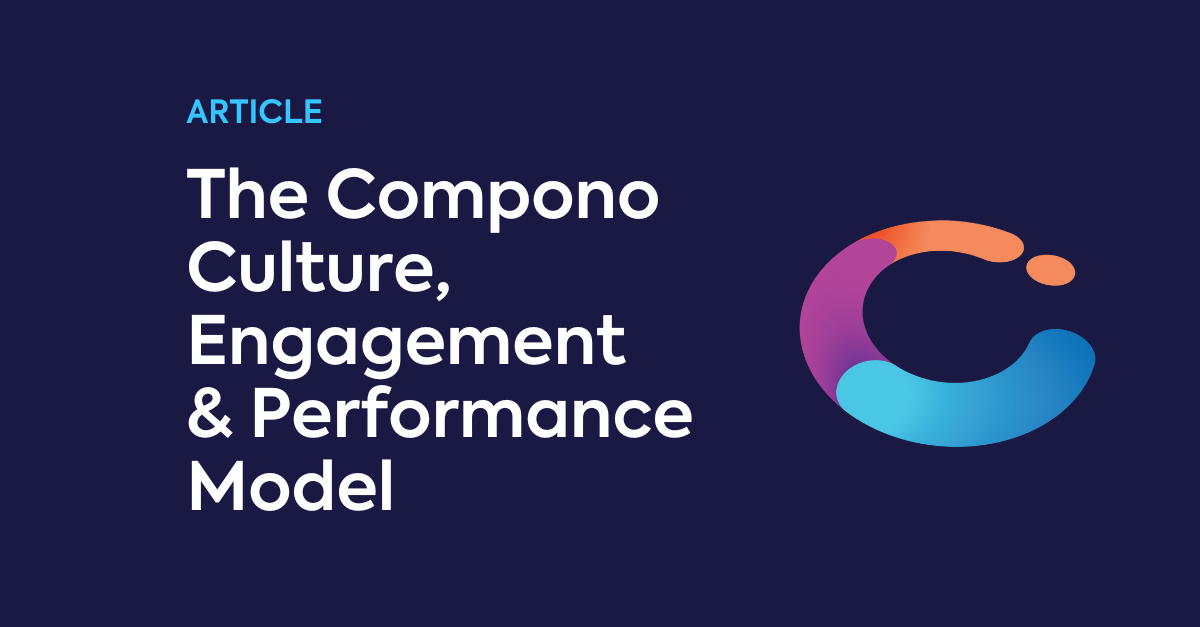7 Essential Tools to Enhance Manager Skills for HR Leaders
Seven essential tools are presented in the article which HR leaders require to build their managerial capabilities. The tools include:
Become the expert on delivering
valid and fair assessments for
your training and education.
Hire
|
Engage
|
Develop
|
|
Automatically match to candidates who are a great fit for your team culture and who are intrinsically motivated to succeed. |
Deeply understand your organisation with science-backed analytics on your culture, team design, and engagement. |
Back your onboarding, compliance and skill development with industry-leading credentialling, competency and capability expertise.
|
.png?width=383&height=200&name=team%20(1).png)

Understanding and measuring company culture is a critical aspect of building a successful organisation. Company culture is the invisible thread that binds employees together, influencing how they interact, make decisions, and ultimately, how they perform. But how do you measure something as intangible as culture? The process requires a strategic approach, combining qualitative insights with quantitative data to paint a comprehensive picture of the organisational environment.
To begin with, it's essential to define what company culture means for your organisation. Culture encompasses the shared values, beliefs, and behaviours that shape how work gets done. It’s reflected in everything from decision-making processes to how employees communicate and collaborate. A clear understanding of these elements provides a foundation for measurement. One effective way to start is by conducting surveys and interviews with employees. These tools can capture perceptions and experiences, offering insights into the prevailing attitudes and values within the company. Surveys should be designed to assess various dimensions of culture, such as leadership style, communication effectiveness, and employee engagement. Open-ended questions in interviews can further uncover nuanced perspectives that quantitative data might miss.

Another critical component of measuring company culture is observing workplace behaviours. This involves looking at how employees interact with each other and with management, how decisions are made, and how conflicts are resolved. Observations can reveal discrepancies between stated values and actual behaviours, highlighting areas where the culture may need alignment. For instance, if a company values innovation but employees are hesitant to share new ideas, there may be underlying cultural barriers that need addressing.
Data analytics also play a crucial role in measuring company culture. By analysing metrics such as employee turnover rates, absenteeism, and productivity levels, organisations can identify patterns that may indicate cultural strengths or weaknesses. High turnover rates, for example, might suggest a misalignment between the company’s values and those of its employees. Similarly, low engagement scores could point to a lack of connection with the company’s mission or leadership.
Incorporating feedback from exit interviews can provide additional insights into cultural dynamics. Departing employees often offer candid feedback about their experiences, shedding light on cultural issues that may not be apparent to current staff. This feedback can be invaluable in identifying areas for improvement and ensuring that the culture supports retention and satisfaction.
From our experience working with companies on culture alignment, we’ve found that leveraging people intelligence tools can significantly enhance the measurement process. These tools can provide data-driven insights into team dynamics and cultural fit, helping organisations understand how well their culture supports their strategic goals. For example, Compono’s approach to mapping team dynamics helps uncover these kinds of insights, allowing HR professionals to make informed decisions about cultural initiatives.
Ultimately, measuring company culture is not a one-time exercise but an ongoing process. Regular assessments allow organisations to track changes over time, ensuring that the culture evolves in alignment with business objectives. By taking a strategic approach to measuring culture, organisations can create an environment where employees feel valued, engaged, and motivated to contribute to the company’s success. If your organisation is exploring similar challenges, it might be worth taking a closer look at your current culture and people strategy.
When it comes to measuring company culture, the question of "who should be involved" is as crucial as the "how." The process of evaluating and understanding the cultural dynamics within an organisation is not a task that can be relegated to a single department or individual. Instead, it requires a collaborative effort that spans various levels of the organisation, each bringing unique perspectives and insights to the table.
First and foremost, leadership plays a pivotal role in this process. Executives and senior managers set the tone for the organisational culture, and their buy-in is essential for any cultural assessment to be effective. They are the visionaries who define the strategic direction of the company, and their understanding of the existing culture versus the desired culture is critical. Leaders must be open to feedback and willing to act on the insights gained from cultural assessments. Their commitment to fostering a positive culture can inspire the rest of the organisation to engage in the process earnestly.
Human Resources (HR) professionals are also key players in measuring company culture. They are often the custodians of the company's values and are responsible for implementing policies and practices that align with these values. HR teams have the expertise to design and administer surveys, conduct interviews, and analyse data related to employee engagement and satisfaction. They can leverage tools like Compono’s people intelligence platform to gain deeper insights into cultural dynamics and identify areas for improvement. By working closely with leadership, HR can ensure that cultural assessments are not just a one-time exercise but an ongoing process that informs strategic decision-making.
Middle managers and team leaders are the bridge between the executive team and the broader workforce. They have a direct line of sight into the day-to-day operations and are often more attuned to the nuances of team dynamics. Their involvement in measuring company culture is crucial because they can provide context to the data collected and help interpret how cultural issues manifest in different teams. Moreover, they are instrumental in implementing changes and fostering a culture of open communication and continuous improvement.
Employees at all levels should also have a voice in the process. After all, they are the ones who experience the culture firsthand and can provide valuable insights into what is working and what is not. Encouraging employee participation in surveys, focus groups, and feedback sessions can lead to a more comprehensive understanding of the organisational culture. It also demonstrates that the company values their input and is committed to creating a workplace where everyone feels heard and valued.
In addition to internal stakeholders, external consultants or advisors can offer an objective perspective on the company culture. They bring a wealth of experience from working with various organisations and can provide benchmarking data and best practices. Their outsider view can help identify blind spots that internal stakeholders might overlook and offer fresh ideas for cultural transformation.
Ultimately, measuring company culture is a collective endeavour that requires input from a diverse group of stakeholders. By involving leadership, HR, middle management, employees, and external advisors, organisations can gain a holistic view of their culture and make informed decisions to enhance it. This collaborative approach not only leads to more accurate assessments but also fosters a sense of ownership and accountability across the organisation. If your organisation is exploring similar challenges, it might be worth taking a closer look at your current culture and people strategy.
Compono takes the complexity out of measuring company culture by bringing everything into one intuitive platform. Instead of juggling multiple tools and spreadsheets, you can analyse, track, and understand your culture in a single place. Compono’s people intelligence platform helps identify cultural hotspots and pinpoints areas needing attention, making the entire process more actionable and far less overwhelming. By turning what seems like a daunting task into clear, digestible data, it empowers organisations to quantify their culture and drive meaningful change without the guesswork.

Understanding and measuring company culture is not just a trendy HR initiative; it's a strategic necessity for businesses aiming to thrive in today's competitive landscape. When organisations take the time to assess their cultural dynamics, they unlock a treasure trove of benefits that can significantly impact their overall success. One of the most immediate advantages is the ability to identify and address cultural misalignments. By measuring company culture, businesses can pinpoint discrepancies between their current cultural state and their desired cultural goals. This insight allows leaders to implement targeted strategies to bridge these gaps, fostering a more cohesive and harmonious work environment.
Moreover, measuring company culture enhances employee engagement and satisfaction. When employees feel that their values align with those of the organisation, they are more likely to be motivated, committed, and productive. This alignment reduces turnover rates, as employees are less inclined to leave a workplace where they feel understood and valued. In turn, this leads to cost savings associated with recruitment and training, as well as the retention of institutional knowledge and expertise.
Another significant benefit of measuring company culture is the improvement in team performance. When cultural assessments reveal the underlying factors that drive team dynamics, organisations can leverage this information to optimise team structures and interactions. Understanding what makes top-performing teams successful allows businesses to replicate these qualities across the organisation, leading to enhanced collaboration, innovation, and productivity.
Furthermore, measuring company culture provides a foundation for informed decision-making. Leaders equipped with cultural insights can make strategic choices that align with the organisation's values and long-term objectives. This clarity in decision-making reduces the risk of costly missteps and ensures that all initiatives, from hiring to product development, are in harmony with the company's cultural ethos.
In addition, a well-measured company culture can serve as a powerful tool for attracting top talent. In today's job market, candidates are increasingly prioritising cultural fit when considering potential employers. By showcasing a strong, positive culture, organisations can differentiate themselves and appeal to individuals who are not only skilled but also aligned with the company's values and mission.
Finally, measuring company culture supports the development of a resilient and adaptable workforce. In an ever-changing business environment, organisations that understand their cultural strengths and weaknesses are better positioned to navigate challenges and seize opportunities. This adaptability is crucial for sustaining growth and maintaining a competitive edge.
From our experience working with companies on culture alignment, we've seen firsthand how these benefits manifest in real-world scenarios. Compono’s approach to mapping team dynamics helps uncover these kinds of insights, empowering HR to become strategic advisors who drive meaningful change. If your organisation is exploring similar challenges, it might be worth taking a closer look at your current culture and people strategy.
Embarking on the journey to measure company culture can feel like navigating uncharted waters. However, understanding the nuances of your organisational culture is crucial for fostering a thriving workplace. The first step is to establish a clear purpose for your cultural assessment. Ask yourself what you hope to achieve by measuring your company culture. Are you looking to improve employee engagement, enhance team dynamics, or align your workforce with your organisational goals? Defining your objectives will guide the entire process and ensure that your efforts are focused and meaningful.
Once your goals are set, it's essential to choose the right tools and methodologies for your cultural assessment. There are various approaches to consider, from qualitative methods like interviews and focus groups to quantitative tools such as surveys and data analytics. Each method has its strengths, and often a combination of both provides the most comprehensive insights. For instance, surveys can offer a broad overview of employee sentiments, while interviews can delve deeper into specific issues. From our experience working with companies on culture alignment, leveraging a mix of these tools can provide a well-rounded understanding of your organisational culture.
As you gather data, it's important to ensure that your assessment is inclusive and representative of your entire workforce. This means considering diverse perspectives across different departments, roles, and levels of seniority. Inclusivity in your assessment process not only enriches the data but also demonstrates a commitment to valuing every employee's voice. This approach can uncover hidden cultural dynamics that might otherwise go unnoticed, offering a more accurate picture of your organisational environment.
Interpreting the data is where the real work begins. It's crucial to approach this step with an open mind, ready to uncover both strengths and areas for improvement. Look for patterns and trends that emerge from the data, and consider how these align with your initial objectives. Are there discrepancies between how leadership perceives the culture and how employees experience it? Identifying these gaps is key to developing targeted strategies for cultural enhancement.
Communication is another vital component of the process. Sharing the findings with your team fosters transparency and trust, which are foundational to a positive company culture. It's important to communicate not just the results, but also the steps you plan to take in response. This demonstrates a commitment to continuous improvement and shows employees that their feedback is valued and acted upon.
Compono empowers organisations to adopt a data-driven approach to culture measurement, transforming raw feedback into meaningful insights that drive real impact. By consolidating these insights into one platform, it encourages collaboration across all levels—from leadership to employees. This transparency ensures that everyone is on the same page, working towards a shared vision of a thriving workplace culture. Whether it’s spotting patterns, uncovering areas for growth, or celebrating what’s already working, Compono makes culture conversations constructive, informed, and forward-thinking.
Measuring company culture is a collective effort that requires input from a diverse group of stakeholders. With tools like Compono facilitating this process, organisations can go beyond surface-level assessments and make informed decisions to enhance their workplace. By involving leadership, HR, middle management, employees, and external advisors, the result is a holistic view of culture that inspires accountability and meaningful change throughout the organisation.
Finally, remember that measuring company culture is not a one-time event but an ongoing process. Regular assessments allow you to track progress, adapt strategies, and respond to changes within the organisation. By continuously measuring and refining your company culture, you create an environment where employees feel engaged, valued, and aligned with the company's mission. This ongoing commitment to cultural excellence can lead to improved performance, higher retention rates, and a more cohesive and motivated workforce. If your organisation is exploring similar challenges, it might be worth taking a closer look at your current culture and people strategy.
Understanding the nuances of company culture is crucial for any organisation aiming to thrive in today's competitive landscape. However, the question of timing—when to measure company culture—often perplexes even the most seasoned HR professionals and business leaders. The truth is, there isn't a one-size-fits-all answer. Instead, the timing should be strategic, aligning with key organisational milestones and changes.
One of the most opportune moments to measure company culture is during periods of significant organisational change. This could include mergers, acquisitions, or restructuring. Such transitions can dramatically alter the cultural landscape, making it essential to assess the current state and identify any emerging gaps. By doing so, organisations can proactively address potential cultural misalignments before they escalate into larger issues. From our experience working with companies on culture alignment, we've seen how timely assessments during these periods can facilitate smoother transitions and foster a more cohesive work environment.
Another critical time to measure company culture is during the onboarding of new leadership. New leaders bring fresh perspectives and ideas, which can influence the existing culture. Conducting a cultural assessment during this phase provides valuable insights into how the new leadership style aligns with or diverges from the current culture. This understanding can guide leaders in making informed decisions that respect the existing cultural framework while introducing necessary changes. Compono’s approach to mapping team dynamics helps uncover these kinds of insights, ensuring that leadership transitions are as seamless as possible.
Annual or bi-annual reviews are also ideal times to measure company culture. Regular assessments allow organisations to track cultural trends over time, providing a comprehensive view of how the culture evolves. This ongoing evaluation helps identify patterns and shifts that may require attention. For instance, if employee engagement scores are consistently declining, it may indicate underlying cultural issues that need to be addressed. By integrating culture assessments into regular review cycles, organisations can maintain a pulse on their cultural health and make data-driven decisions to enhance it.
Moreover, measuring company culture should be a priority during periods of rapid growth or expansion. As companies scale, maintaining a consistent culture becomes increasingly challenging. New hires, diverse teams, and expanded operations can dilute the original cultural essence. By assessing culture during these growth phases, organisations can ensure that their core values and principles are preserved, even as they evolve. We've helped many HR teams navigate these issues through people intelligence tools, enabling them to sustain a strong, unified culture amidst growth.
Finally, it's essential to measure company culture in response to specific challenges or crises. Whether it's a public relations issue, a significant drop in employee morale, or a sudden increase in turnover, these situations often signal deeper cultural problems. Conducting a cultural assessment in these instances can help identify the root causes and inform targeted interventions. This proactive approach not only addresses immediate concerns but also strengthens the overall cultural resilience of the organisation.
In essence, the best time to measure company culture is not a singular event but a series of strategic moments throughout the organisational lifecycle. By aligning cultural assessments with key milestones and challenges, businesses can gain a deeper understanding of their cultural dynamics and make informed decisions that drive long-term success. If your organisation is exploring similar challenges, it might be worth taking a closer look at your current culture and people strategy.

Understanding and measuring company culture is a nuanced process that requires more than just surface-level observations. It involves delving into the core values, beliefs, and behaviours that define how an organisation operates. For mid-sized business leaders and HR professionals, this task can seem daunting, but it is essential for fostering a thriving workplace environment. The first step in this journey is to recognise that company culture is not a static entity; it evolves with the people and the organisation's goals. Therefore, measuring it requires a dynamic approach that can adapt to these changes.
One effective method for gauging company culture is through employee surveys. These surveys should be designed to capture honest feedback about the workplace environment, leadership effectiveness, and team dynamics. It's crucial to ensure that these surveys are anonymous to encourage candid responses. The insights gained from these surveys can highlight areas of strength and pinpoint aspects that need improvement. However, surveys alone are not enough. They should be complemented by regular one-on-one interviews and focus groups, which provide a more in-depth understanding of the underlying issues affecting the culture.
Another critical aspect of measuring company culture is observing the alignment between stated values and actual behaviours. This involves assessing whether the company's mission and values are reflected in everyday actions and decisions. For instance, if a company values innovation, are employees encouraged to take risks and propose new ideas? If teamwork is a core value, is collaboration actively promoted and rewarded? Discrepancies between stated values and actual practices can indicate cultural misalignment, which can lead to disengagement and high turnover rates.
Leadership plays a pivotal role in shaping and maintaining company culture. Therefore, evaluating leadership effectiveness is an integral part of measuring culture. This can be done through 360-degree feedback mechanisms, where leaders receive input from peers, subordinates, and supervisors. This feedback can provide valuable insights into how leaders are perceived and whether they are fostering a positive and inclusive culture. Additionally, leadership development programs can be implemented to address any gaps identified in these evaluations.
Compono’s approach to mapping team dynamics helps uncover these kinds of insights, offering a comprehensive view of how teams interact and function within the broader organisational culture. By leveraging people intelligence tools, HR teams can gain a deeper understanding of the cultural landscape and make informed decisions to enhance it.
It's also important to consider the role of physical and digital workspaces in shaping company culture. The design of the office, the availability of collaborative tools, and the flexibility of work arrangements all contribute to the cultural environment. Regularly assessing these elements and gathering employee feedback on their effectiveness can provide additional data points for measuring culture.
Finally, measuring company culture should be an ongoing process, not a one-time event. Regularly revisiting and updating cultural assessments ensures that the organisation remains aligned with its goals and values. This continuous evaluation allows for timely interventions and adjustments, fostering a culture that supports both employee satisfaction and organisational success.
If your organisation is exploring similar challenges, it might be worth taking a closer look at your current culture and people strategy. By adopting a strategic approach to measuring company culture, you can create a more cohesive and productive work environment that aligns with your organisational objectives.
Talk to an expert and find out how Compono may be the smarter choice for your next growth phase.

Seven essential tools are presented in the article which HR leaders require to build their managerial capabilities. The tools include:

The article provides an in-depth exploration of attrition rates, which measure employee departures as a percentage of the workforce. It underscores...

Misalignment. It’s a word that sends shivers down the spine of business leaders everywhere. When employees and organisations aren’t on the same...

The duration that an employee stays with a company defines their job tenure. The HR management needs this metric to evaluate employee loyalty and...

The article examines the impact of assessment personality tools within organisations, emphasising their significance in aligning employee traits...

Organisational culture and employee engagement don’t just shape your business; they define its success. Imagine a workplace where employees feel...